8. The Evil Dead (1981)
Short: Within the Woods (1978)
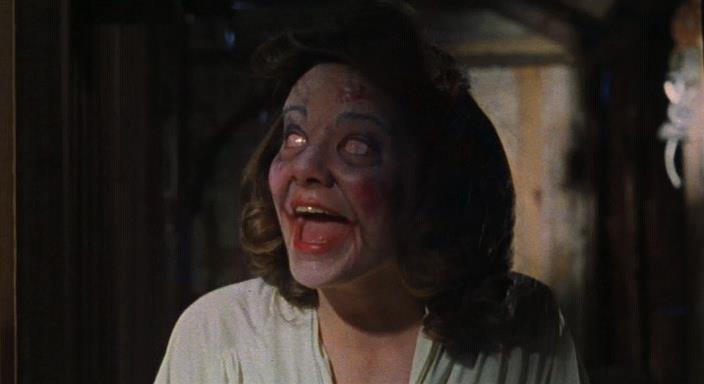
A group of friends have gone on a trip to stay at an isolated cabin in the woods. When Bruce (Bruce Campbell) finds a dagger at an Indian burial ground and takes it, he is transformed into a zombie-like monster that mercilessly attacks his two friends and girlfriend Ellen (Ellen Sandweiss). A massacre has been started and the young friends have to fight for their survival.
Sam Raimi, who directed both films, didn’t have very much financial support or knowledge about the horror genre when he decided, with his friend and actor Bruce Campbell, to make “Within the Woods”. T
he idea was that the short should be a sort of prototype for a future feature film, and that with the short, he could get the attention and support from producers and different backers. He therefore created “Within the Woods” on a very low budget with friends and family and used very low-budget effects.
Some of the bloody makeup Bruce Campbell wore for his part was supposedly so expensive compared to their budget that Campbell had to sleep with the makeup on, so that they wouldn’t have to use money on removing and reapplying it every day of shooting.
“Within the Woods” uses a lot of elements that today are well known as parts of Raimi’s style of filmmaking (also noticeable in “The Evil Dead”), with psychedelic music, dark tones and classic horror storytelling devices. Although the short wasn’t initially commercially successful, it’s now seen as the beginning of a very well-known horror franchise.
7. 12 Monkeys (1995)
Short: La Jetée (1962)
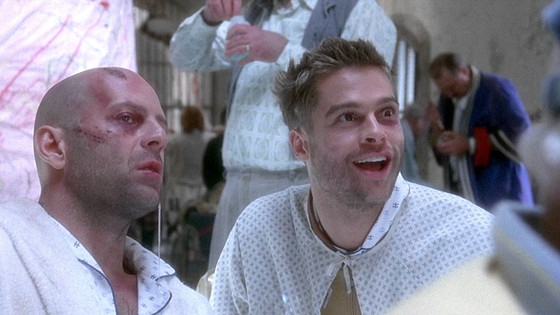
A man is held prisoner after World War III in a post-apocalyptic Paris, and he is chosen to go back in time by scientists who experiment with time traveling. They attempt several times, and when the experiment finally succeeds and the man is thrown back in time, he develops a relationship with a woman (Héléne Chatelain).
As the mission is completed, the scientists are done with him, and the jailers are allowed to execute him. However, the man escapes and travels back in time again, to when he was a kid, and saw the woman for the first time. As he returns he is about to run up to the woman, but he is shot by a jailer who followed him. The incident is seen by a lot of people, one of them being himself as a kid.
“12 Monkeys” is a bit different from the other films mentioned on this list, seeing as the people behind the short didn’t make the feature, and the short wasn’t ever made in the mindset of making a feature out of it.
This also means that there are a lot of things that are different when comparing the two films. Most noticeably (and creatively impressive), “La Jetée” is primarily made out of still photographs, it’s in black and white, it’s French, and the story is caused by World War III and not an epidemic, like it is in “12 Monkeys”.
Of course there are other major differences, but essentially the homage the feature pays to the short is very obvious with the time traveller who has to change the past and who falls in love with a woman from the past.
It was actually executive producer Robert Kosberg who came up with the idea for the ‘remake’, seeing as he had been a fan of the French short for many years. He talked to Chris Marker (the director of “La Jetée”), who agreed to the project.
Kosberg got Universal Studios convinced to buy the remake rights and Terry Gilliam was chosen to direct it. In the end, Marker was credited as one of the writers of the film, seeing as it truly was him who started it all.
6. Sling Blade (1996)
Short: Some Folks Call it a Sling Blade (1994)
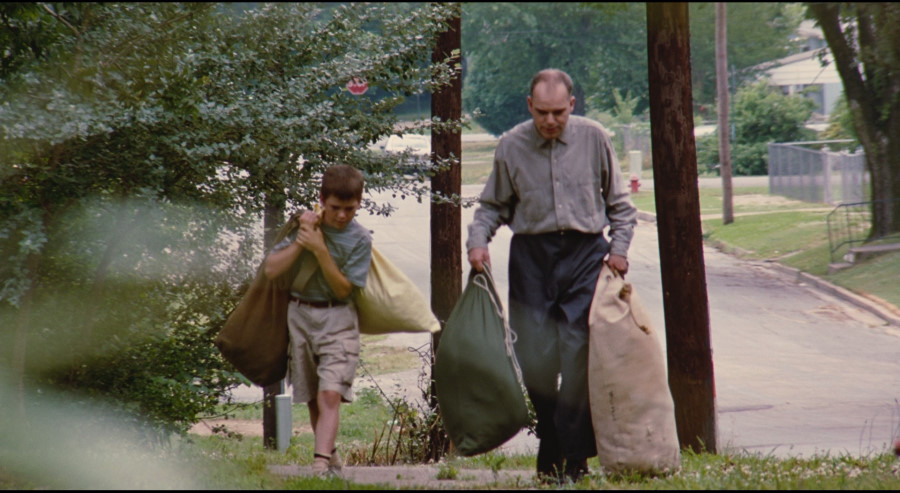
Two female reporters are allowed to interview Karl Childers (Billy Bob Thornton) on the day of his release from 25 years in an institution for the criminally insane. He was brought there for the double murder of his own mother and her lover, which he retells the horrible story of in the interview.
“Some Folks Call it a Sling Blade” and “Sling Blade” deal with the same character and story, but at different points in time; the short focuses on an interview concerning the past on the day Childers is set free, while the feature also goes into Childer’s life after the release.
After its success as a short film, the people behind it decided to develop the script into a feature, which turned out quite well, receiving an Oscar for Best Original Screenplay.
Director George Hickenlooper had made the feature “Grey Knight” in 1993 and didn’t really need to do a short film. However, when Thornton came with the story for “Some Folks Call it a Sling Blade”, Hickenlooper knew he wanted to do it, because he liked the story, because he wanted to work with Thornton, and because he really liked the format of a short film in itself.
They didn’t do the film with the thought of the feature film, they simply did it because they found the project interesting, and because they liked it as a short film, even though it isn’t a format that normally is used for commercial reasons.
5. Whiplash (2014)
Short: Whiplash (2013)
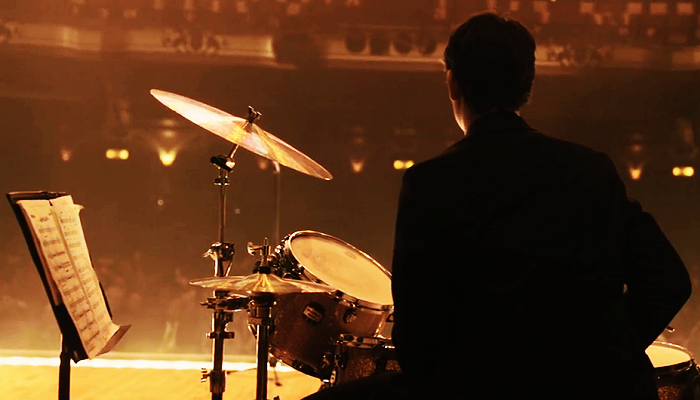
The young Andrew Neiman dreams of drumming as a career, and one day becoming one of the ultimate greats. He is therefore thrilled with excitement when he gets to the notorious Fletcher’s class. Although nervous about starting, Neiman seems to get along somewhat well on his first day, until Fletcher slowly but harshly shows just how tormenting his teaching methods can be.
The short film is almost exactly duplicated as a scene in the feature, with J.K. Simmons’s dialogue, the camera movement, and the general storyline. The biggest difference between the two is probably the color palette and the fact that the role of Neiman went to Miles Teller in the feature. Damien Chazelle’s short film “Whiplash” went to Sundance and one year later, his feature of the same name was nominated for, and won, several Oscars.
The feature script was actually written alongside the short, so that the short could be used to gain capital for the feature. Therefore, when trying to get Simmons on board for the short film, the script for the feature was sent along as well. And although Simmons had his doubts with the lack of experience of Chazelle as a director, he thought the writing was so brilliant that he couldn’t say no.
4. District 9 (2009)
Short: Alive in Joburg (2005)
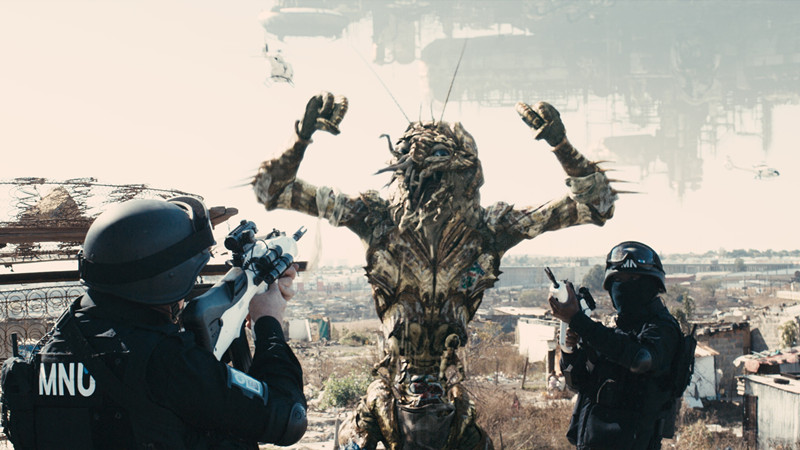
The short “Alive in Joburg” is a documentary-style film about Johannesburg, which has become the home of extraterrestrial creatures. Back in the 90s, when they arrived in their spaceships, they were supposedly welcomed by the people of Johannesburg, giving them an area in the city to live in.
However, it seems from interviews that they might have been treated as slaves and not friends. Therefore, as time passed, the aliens began going about areas that were not given to them and the people of Johannesburg got scared. Police forces were ‘forced’ to use violence against the aliens, and chaos began.
When seeing the two films it’s pretty clear by the first couple of minutes of the feature (with documentary-style like interviews and the story itself) that “District 9” builds upon what “Alive in Joburg” did, and Neill Blomkamp is also the director behind both films.
However, the idea of making a feature about this world actually came from an outside screenwriter, Fran Jackson, who suggested that Blomkamp and his co-writer, Terri Tatchell, should try and write a feature script from the basis of the short. And so they did…
An interesting fact about the short is, as much as we know that it isn’t a documentary, some of the interviews during the film aren’t actually actors reciting lines from a script. Instead, it’s actual South Africans talking about how they feel about black Nigerians and Zimbabweans in Johannesburg. Blomkamp has stated that this was when he came up with the idea of aliens in South Africa.
3. Napoleon Dynamite (2004)
Short: Peluca (2002)

“Peluca” is a 9-minute black-and-white short that follows a day in the life of Seth, an extraordinarily nerdy guy with blonde curls and huge glasses. On this particular day, Seth skips school with his two friends, Pedro and Giel, to buy a lottery ticket as well as a wig at the local thrift store for Giel.
Jon Heder does an excellent job of portraying the character of Seth, which he also carries on to the feature “Napoleon Dynamite”, where he is now named Napoleon, but is essentially the same quirky character.
Generally the whole mood, characters and tempo of the two films are very alike, and it comes as no surprise that they were made with just one year between each other, and with the same director, Jared Hess.
Nearly all the scenes from the short were used in the production of the feature and it seems that the only really obvious differences are the two friends that ended up as one character (Pedro Sanchez), and the title that went from “Peluca” (Spanish for wig) to “Napoleon Dynamite”.
“Peluca” was made as an assignment at Brigham Young University, shot over the course of just two days, and with 16mm film. It was shot in Hess’ hometown of Preston, Idaho, and in many ways it seems very simple and ‘random’. However, the following year the short went to the Slamdance Film Festival, and soon the comedy classic “Napoleon Dynamite” was made.
2. Sin City (2005)
Short: The Customer is Always Right
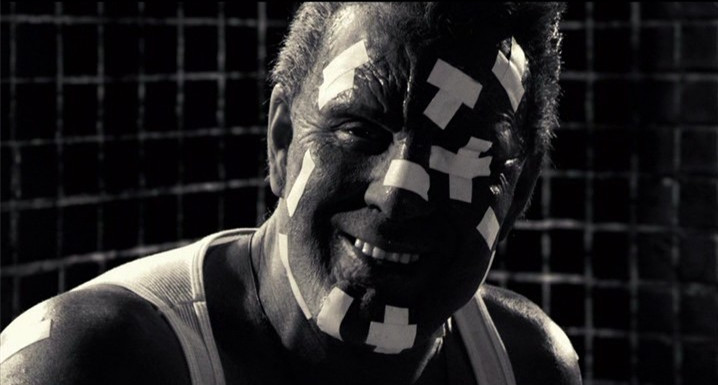
On a beautiful evening, a man (the Salesman) approaches a stunning woman (the Customer) in a red dress, standing on the balcony of a penthouse apartment. He narrates as they seem to fall in love during their conversation, and they end up kissing in the rain. Finally, he shoots her dead, and concludes that he will “cash her check in the morning.”
This short film ended up as the opening scene (still called “The Customer is Always Right”) of “Sin City”, seeing as the director, Robert Rodriguez, was very true to the original material from which he adapted the short.
This is due to the fact that he filmed the short as the original proof of concept to convince the author of the story / comic book, Frank Miller, that “Sin City” would be stunning if it was adapted to film. Miller, who had been rather worried about giving the rights of his comic books to anybody, was extremely convinced when he saw the short, and hereby “Sin City” was brought to the silver screen.
The short was also used when trying to convince Bruce Willis, amongst other actors and actresses, to be a part of the project. They were intrigued by the style of the short, and as Rodriguez and Miller agreed to collaborate in directing the film together as a team (with Quentin Tarantino even directing one scene), everyone seemed on board. And of course, it ended up becoming the now very memorable and classic feature “Sin City”.
1. Toy Story (1995)
Short: Tin Toy (1988)
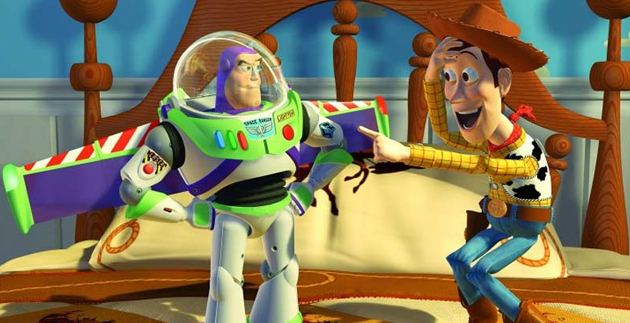
A tin one-man-band toy dreams of being played with, with all of his heart. Although, when he finally meets his child, he discovers to his horror that it’s no ordinary sweet kid, but instead a destructive baby. This leads to a long flee for the little tin toy, trying to not get destroyed, and he finally finds safety under a desk.
However, in the meantime, the baby falls and starts crying. The tin man, feeling bad, courageously steps out from his hiding place and nobly tries to play music in the hope of making the baby happy again. However, the baby has, in the meantime, found a box to play with and the tin man no longer gets any attention.
Pixar didn’t have much funding at the time when the short was made, and although a short film sequel was planned for “Tin Toy” (which won an Oscar for Best Short), it never came about. Instead Pixar got involved with Disney, planning to make a feature out of the successful short.
In the beginning, it was even planned that the tin toy was supposed to be the lead character and the story should revolve around him, but during the process of writing, it was concluded that the toy was too old-fashioned, and instead came Woody and Buzz Lightyear.
One can see how “Tin Toy” influenced its feature with the idea of toys having feelings and wanting to be played with. So, even though the characters changed along the way, it’s essentially the same universe the two films present to the audience.
Therefore, it’s also quite nice how in the first film of the “Toy Story” franchise, a “Tin Toy” book is seen on Andy’s bookshelf. The book’s author is even named ‘Lasseter’, which is a clear reference to the director and writer of the short, John Lasseter.
Author Bio: Dicte Houmøller is a Danish film enthusiast who likes to think of herself as a future screenwriter. For now she tries to cruise around on her skateboard and look cool, while coming up with great scenes for her next script.